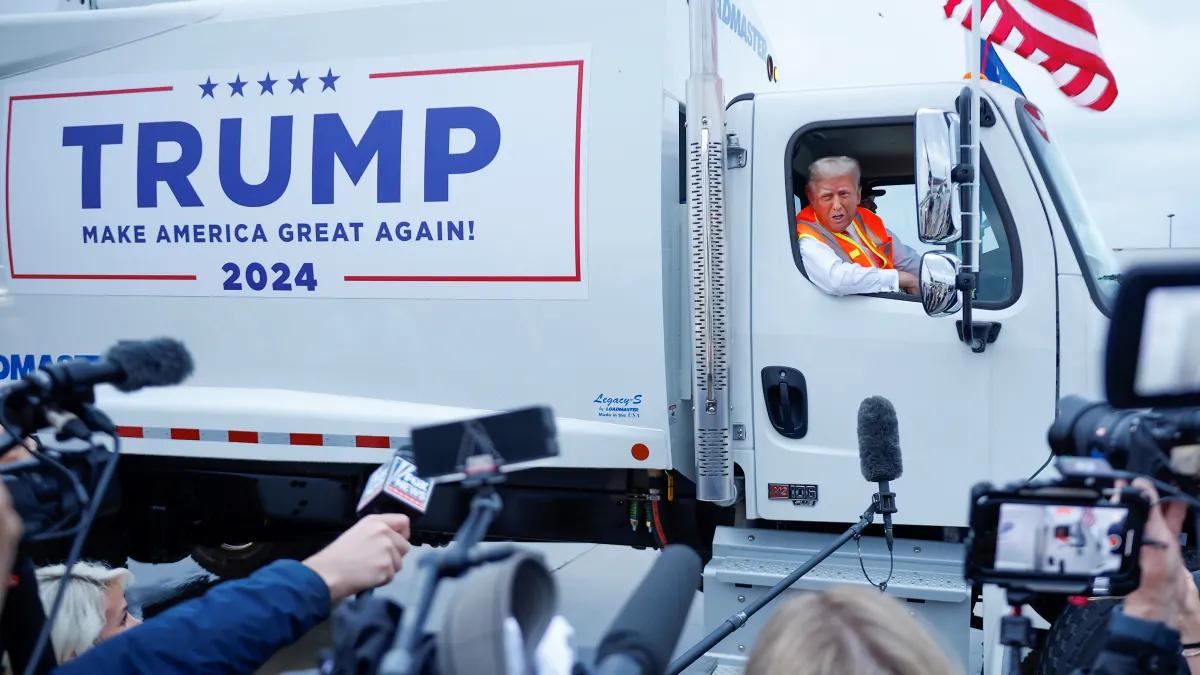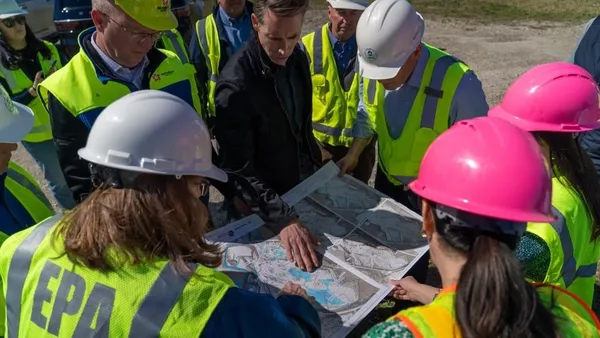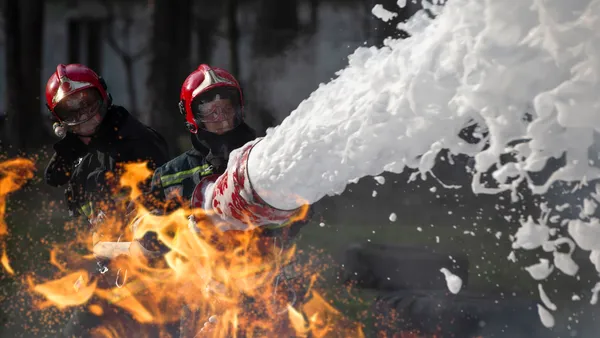Dive Brief:
- The U.S. EPA has an opportunity to significantly increase the efficiency of landfill emissions regulations with its anticipated update to Clean Air Act regulations next year, research group Industrious Labs argues in a new report.
- Industrious looked at the opportunity to reduce emissions by requiring better landfill cover materials and practices. Its researchers also noted how such practices could mesh with the growing capabilities of new monitoring technologies, which are rapidly entering mainstream practices.
- The report argues regulations are the best way to ensure the most up-to-date practices are applied across the widest swath of landfills. It found that its recommendations could lead to a 56% reduction in U.S. landfill methane emissions from 2025 to 2050.
Dive Insight:
The EPA signaled in July it would update its air emissions requirements for new and existing landfills next year. The updated New Source Performance Standards for new facilities and Emissions Guidelines for existing facilities would be the first promulgated since 2016. They would be published months later than EPA's legally obligated deadline to update such requirements every eight years.
Environmental groups have long said an update to landfill emissions regulations is overdue, as the Biden administration has made cutting methane emissions a key climate priority. A majority of MSW landfills in the country are currently required to comply with the standard, but getting the 2016 standard to apply to landfills has been a challenge. The regulation stalled under the Trump administration and was revived by the Biden administration. The current standard went into effect in 2021 and extended regulation to an additional 1,590 landfills.
In September, the EPA released its findings from landfill inspections around the country over the last three years. It found "widespread" issues of noncompliance with existing landfill emissions regulations, many of which resulted in methane emissions exceedances.
While enforcement will be needed to tackle the issue of methane emissions compliance, a more comprehensive set of regulations tailored explicitly to methane will deliver the best results, said Katherine Blauvelt, circular economy campaign director at Industrious Labs.
"First and foremost, I think we can get the EPA out of playing the game of whack-a-mole and trying to find where there are issues of noncompliance," Blauvelt said. "Let's use the technology that's available today."
A growing body of evidence has shown the use of drones and satellite imaging can replace current landfill methane monitoring practices — which Blauvelt described as the antiquated, “Windows 2000” approach to tracking emissions. But the new Industrious report modeled the impact of improving methane collection abilities on the ground. They found that updates to landfill cover practices and gas collection and control systems could reduce landfill emissions by 2,922 million metric tons of carbon dioxide equivalent by 2050, cutting more than half of the estimated 5,197 million metric tons of CO2e that Industrious predicts landfills will emit if no changes are made.
“This analysis really simply confirms that dramatically reducing methane emissions from landfill is highly achievable, and that’s really timely,” Blauvelt said.
The report from Industrious found that EPA could extend landfill emissions regulation to cover more landfills and capture their methane emissions. Industrious' researchers propose that landfills with at least 200,000 tons of waste in place or that generate more than 664 tons per year of methane should fall under the regulation.
The EPA should also update what those landfills must do to keep a lid on their methane emissions, the researchers argue. Highlighting the EPA's own findings that 61% of methane from food waste is released from landfills before gas collection systems are installed, Industrious' report proposes that such systems should be installed within one year of waste being placed in a landfill cell. Those systems should also be required to incorporate horizontal gas collection components, integration with leachate management systems, and other design improvements if necessary, per the report.
The report also took a look at cover materials required for landfill cells under existing law. Currently, requirements surrounding cover material are regulated by the Resource Conservation and Recovery Act, according to Industrious. Those regulations don't have restrictions around methane, and as such can contribute to methane leaks that are increasingly being detected via satellite imaging.
In certain cases, landfill operators can install better cover systems that oxidize landfill gas and lower the rate of methane generation. Industrious' researchers argued EPA should require landfill operators to take the latest research on such practices into account.
"I think the main takeaway is how many of these emissions that we can reduce by doing these simple things," said Kim Finlay, senior campaign analyst at Industrious.
The U.S. EPA continues to study methane monitoring and best practices for landfills as part of its National Strategy to Advance an Integrated U.S. Greenhouse Gas Measurement, Monitoring, and Information System. Late last year, it also required the first landfill to use drone monitoring technology to comply with a consent order over fugitive emissions.















